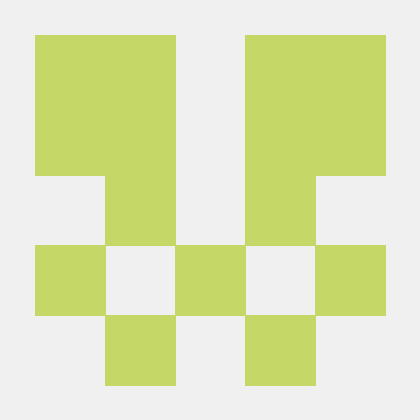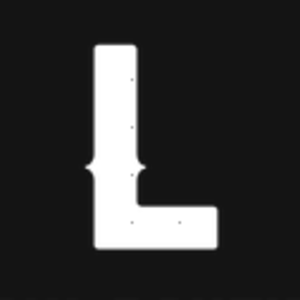Menu
Bounties /Pin to ProfileBookmark @steimeFeb 15.2023 — #https://webdeveloper.com/tips-tricks/getting-started-with-solidjs/ You find an Article here
@steimeFeb 15.2023 — #https://webdeveloper.com/tips-tricks/getting-started-with-solidjs/ You find an Article here @OnlineDevelopersFeb 12.2023 — #SolidJS is a JavaScript library for building web applications. It was created with the goal of making it easier for developers to build fast, efficient, and dynamic user interfaces. SolidJS provides a powerful and flexible framework for building modern web applications, and in this article, we'll guide you through the process of getting started with SolidJS.
@OnlineDevelopersFeb 12.2023 — #SolidJS is a JavaScript library for building web applications. It was created with the goal of making it easier for developers to build fast, efficient, and dynamic user interfaces. SolidJS provides a powerful and flexible framework for building modern web applications, and in this article, we'll guide you through the process of getting started with SolidJS.
What is SolidJS?
SolidJS is a reactive JavaScript library that makes it easier to build complex and dynamic user interfaces. It is designed to be fast and efficient, with a focus on performance and scalability. SolidJS works by allowing developers to build their user interfaces as a series of components. These components can be combined in a variety of ways to create rich, dynamic user interfaces. SolidJS uses a virtual DOM (Document Object Model) to manage updates to the user interface, which allows it to make efficient updates to the screen without having to recalculate the entire layout of the user interface.
Getting Started
To get started with SolidJS, you'll need to have a basic understanding of JavaScript and HTML. You'll also need to have a development environment set up on your computer, including a text editor and a web browser. In this article, we'll be using Visual Studio Code as our text editor and Google Chrome as our web browser.
Step 1: Create a new HTML file
The first step in getting started with SolidJS is to create a new HTML file. This file will serve as the starting point for your application, and it will be the first file that your users will see when they visit your site.
Step 2: Add the SolidJS library
The next step is to add the SolidJS library to your HTML file.
Step 3: Create a component
Now that you have the SolidJS library added to your HTML file, it's time to create your first component. In SolidJS, components are the building blocks of your user interface. Components can be combined to create more complex user interfaces, and they can be reused throughout your application.
To create a component in SolidJS, you'll use the solid() function. This function takes two arguments: the first argument is a function that defines the component, and the second argument is the HTML element where the component will be rendered.
Step 4: Run your application
Now that you have a simple component created, it's time to run your application and see it in action. To do this, simply save your HTML file and open it in your web browser. You should see "Hello World!" displayed in your browser.
step 5: Creating a component
Now that we have set up our project, let's create our first component. Components are the building blocks of SolidJS, and you'll use them to create all the parts of your application.
To create a component, we will use the create function, which we imported from the SolidJS library at the beginning of our project. This function takes two arguments: the component's name, and a function that returns the component's template.
step 6: Rendering a component
Now that we have created our first component, let's render it in the browser. We do this by mounting the component to a DOM node.
We will use the render function, which we imported from the ReactDOM library, to do this. The render function takes two arguments: the component you want to render, and the DOM node where you want to render it.
Step 7: Updating the component's state
Components in SolidJS can have a state, which is an object that holds data that can change over time. To update a component's state, we use the setState method, which is available on all components created using the create function.
we define the initial state of the component using the state property. The state is an object with a single property, count, which is set to 0.
In the component's template, we use the count property from the state to display the current count. We also have two buttons that, when clicked, update the state using the setState method.
Step 8: Adding logic to a component
In addition to defining a component's template and state, you can also add logic to a component by defining its methods. Methods are functions that are part of a component and have access to the component's properties and state. @chuckthechDec 08.2022 — #SolidJS is a JavaScript framework that makes it easy to create interactive web applications. If you're new to SolidJS and have no prior experience with React, this article will guide you through the basics of getting started with the framework.
@chuckthechDec 08.2022 — #SolidJS is a JavaScript framework that makes it easy to create interactive web applications. If you're new to SolidJS and have no prior experience with React, this article will guide you through the basics of getting started with the framework.
To use SolidJS, you'll first need to install it on your computer. This can be done using the npm package manager, which is included with the Node.js runtime environment. If you don't already have Node.js installed, you can download it from the official website.
Once you have Node.js installed, open a terminal or command prompt window and run the following command to install SolidJS:
This will install the SolidJS library on your computer, along with any other dependencies it requires.
Next, you'll need to create a new project where you can start using SolidJS. This can be done using the create-solid-app command-line interface (CLI) tool, which is included with the SolidJS library. Run the following command to create a new project:
This will create a new directory called my-solid-app with all the files and dependencies you need to start building a SolidJS application.
To start the development server and preview your application, navigate to the my-solid-app directory and run the following command:
This will start the development server and open your application in a web browser. You should see a default page with a message saying "Welcome to SolidJS".
Now that you have a SolidJS project set up, you're ready to start building your own web applications. The my-solid-app directory contains a number of example files that you can use as a starting point. For example, the App.js file contains the main application component, which is rendered on the page. You can modify this component to add your own content and functionality.
To create a new component, you can use the create-solid-component CLI tool. This tool will generate a new file with the code for a basic SolidJS component, including all the necessary imports and boilerplate. For example, to create a new Button component, you can run the following command:
This will create a new file called Button.js in the src directory of your project. This file contains the code for a basic SolidJS component, which you can modify and customize to suit your needs.
Once you have created your component, you can use it in your application by importing it into your code and rendering it on the page. You can customize the appearance and behavior of your Button component by modifying its props and state. For example, you could add a disabled prop to control whether the button is enabled or disabled, and a onClick prop to handle the user's click events.
In addition to components, SolidJS also provides a range of other features and tools that can help you build powerful and efficient web applications. For example, you can use the useState hook to manage the state of your components, the useEffect hook to perform side effects, and the useReducer hook to handle complex state updates. These hooks make it easy to implement common patterns and behaviors in your code, without the need for complex class-based components.
Overall, SolidJS is a powerful and flexible framework for building web applications, and it offers a range of features and tools that make it easy to create dynamic and interactive user interfaces. By following the steps in this article, you can get started with SolidJS and start building your own web applications today.
Write a WD article on getting started with SolidJS for beginners
SolidJS is a JavaScript framework for making interactive web applications (similar to React). We’re looking for a “how to” style of article for beginners that may not have any React experience.
To claim this bounty, the article must be published on webdeveloper.com by an approved author—to request author access, submit this form (must be logged in).
Bonus SATS (via author tips) available for articles that get featured on the home page!
Sign in
to post a answer3 Replies ↴
0
 @steimeFeb 15.2023 — #https://webdeveloper.com/tips-tricks/getting-started-with-solidjs/ You find an Article here
@steimeFeb 15.2023 — #https://webdeveloper.com/tips-tricks/getting-started-with-solidjs/ You find an Article herereply?
0
 @OnlineDevelopersFeb 12.2023 — #SolidJS is a JavaScript library for building web applications. It was created with the goal of making it easier for developers to build fast, efficient, and dynamic user interfaces. SolidJS provides a powerful and flexible framework for building modern web applications, and in this article, we'll guide you through the process of getting started with SolidJS.
@OnlineDevelopersFeb 12.2023 — #SolidJS is a JavaScript library for building web applications. It was created with the goal of making it easier for developers to build fast, efficient, and dynamic user interfaces. SolidJS provides a powerful and flexible framework for building modern web applications, and in this article, we'll guide you through the process of getting started with SolidJS.What is SolidJS?
SolidJS is a reactive JavaScript library that makes it easier to build complex and dynamic user interfaces. It is designed to be fast and efficient, with a focus on performance and scalability. SolidJS works by allowing developers to build their user interfaces as a series of components. These components can be combined in a variety of ways to create rich, dynamic user interfaces. SolidJS uses a virtual DOM (Document Object Model) to manage updates to the user interface, which allows it to make efficient updates to the screen without having to recalculate the entire layout of the user interface.
Getting Started
To get started with SolidJS, you'll need to have a basic understanding of JavaScript and HTML. You'll also need to have a development environment set up on your computer, including a text editor and a web browser. In this article, we'll be using Visual Studio Code as our text editor and Google Chrome as our web browser.
Step 1: Create a new HTML file
The first step in getting started with SolidJS is to create a new HTML file. This file will serve as the starting point for your application, and it will be the first file that your users will see when they visit your site.
Step 2: Add the SolidJS library
The next step is to add the SolidJS library to your HTML file.
Step 3: Create a component
Now that you have the SolidJS library added to your HTML file, it's time to create your first component. In SolidJS, components are the building blocks of your user interface. Components can be combined to create more complex user interfaces, and they can be reused throughout your application.
To create a component in SolidJS, you'll use the solid() function. This function takes two arguments: the first argument is a function that defines the component, and the second argument is the HTML element where the component will be rendered.
Step 4: Run your application
Now that you have a simple component created, it's time to run your application and see it in action. To do this, simply save your HTML file and open it in your web browser. You should see "Hello World!" displayed in your browser.
step 5: Creating a component
Now that we have set up our project, let's create our first component. Components are the building blocks of SolidJS, and you'll use them to create all the parts of your application.
To create a component, we will use the create function, which we imported from the SolidJS library at the beginning of our project. This function takes two arguments: the component's name, and a function that returns the component's template.
step 6: Rendering a component
Now that we have created our first component, let's render it in the browser. We do this by mounting the component to a DOM node.
We will use the render function, which we imported from the ReactDOM library, to do this. The render function takes two arguments: the component you want to render, and the DOM node where you want to render it.
Step 7: Updating the component's state
Components in SolidJS can have a state, which is an object that holds data that can change over time. To update a component's state, we use the setState method, which is available on all components created using the create function.
we define the initial state of the component using the state property. The state is an object with a single property, count, which is set to 0.
In the component's template, we use the count property from the state to display the current count. We also have two buttons that, when clicked, update the state using the setState method.
Step 8: Adding logic to a component
In addition to defining a component's template and state, you can also add logic to a component by defining its methods. Methods are functions that are part of a component and have access to the component's properties and state.
reply?
0
 @chuckthechDec 08.2022 — #SolidJS is a JavaScript framework that makes it easy to create interactive web applications. If you're new to SolidJS and have no prior experience with React, this article will guide you through the basics of getting started with the framework.
@chuckthechDec 08.2022 — #SolidJS is a JavaScript framework that makes it easy to create interactive web applications. If you're new to SolidJS and have no prior experience with React, this article will guide you through the basics of getting started with the framework.To use SolidJS, you'll first need to install it on your computer. This can be done using the npm package manager, which is included with the Node.js runtime environment. If you don't already have Node.js installed, you can download it from the official website.
Once you have Node.js installed, open a terminal or command prompt window and run the following command to install SolidJS:
npm install solid-jsThis will install the SolidJS library on your computer, along with any other dependencies it requires.
Next, you'll need to create a new project where you can start using SolidJS. This can be done using the create-solid-app command-line interface (CLI) tool, which is included with the SolidJS library. Run the following command to create a new project:
create-solid-app my-solid-appThis will create a new directory called my-solid-app with all the files and dependencies you need to start building a SolidJS application.
To start the development server and preview your application, navigate to the my-solid-app directory and run the following command:
cd my-solid-app
npm startThis will start the development server and open your application in a web browser. You should see a default page with a message saying "Welcome to SolidJS".
Now that you have a SolidJS project set up, you're ready to start building your own web applications. The my-solid-app directory contains a number of example files that you can use as a starting point. For example, the App.js file contains the main application component, which is rendered on the page. You can modify this component to add your own content and functionality.
To create a new component, you can use the create-solid-component CLI tool. This tool will generate a new file with the code for a basic SolidJS component, including all the necessary imports and boilerplate. For example, to create a new Button component, you can run the following command:
create-solid-component ButtonThis will create a new file called Button.js in the src directory of your project. This file contains the code for a basic SolidJS component, which you can modify and customize to suit your needs.
Once you have created your component, you can use it in your application by importing it into your code and rendering it on the page. You can customize the appearance and behavior of your Button component by modifying its props and state. For example, you could add a disabled prop to control whether the button is enabled or disabled, and a onClick prop to handle the user's click events.
In addition to components, SolidJS also provides a range of other features and tools that can help you build powerful and efficient web applications. For example, you can use the useState hook to manage the state of your components, the useEffect hook to perform side effects, and the useReducer hook to handle complex state updates. These hooks make it easy to implement common patterns and behaviors in your code, without the need for complex class-based components.
Overall, SolidJS is a powerful and flexible framework for building web applications, and it offers a range of features and tools that make it easy to create dynamic and interactive user interfaces. By following the steps in this article, you can get started with SolidJS and start building your own web applications today.
@hqauthorThis is great! We've approved your account to be an author here on WD. Can you publish your answer above as an article? Per the bounty details: "To claim this bounty, the article must be published on webdeveloper.com..."Jan 16.2023
reply?
